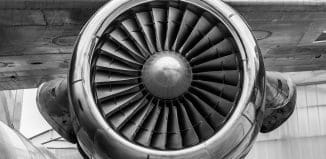Drone Arsenal Customized According to Mission
This post is also available in:  עברית (Hebrew)
עברית (Hebrew)
Law enforcement agencies and first responders are making increasing use of unmanned drone technology to assist in their tasks. Drones open up a whole set possibilities and advantages that substitute for conventional methods of law enforcement.
One big advantage of an unmanned aerial vehicle (UAV) is that it works in three-dimensional space, giving you a high vantage point and the advantage of surprise. UAVs are significantly smaller and quieter than helicopters, and some newer drones are quiet enough for them to get lost in background noise, according to policeone.com.
Just like an officer should have their choice of firearms (pistol, shotgun or patrol rifle), a well-equipped UAV pilot should have their choice of drones, or if the budget doesn’t allow for that, a set of accessories that are suited to the mission at hand.
For surveillance and tracking, UAVs can be equipped with powerful fixed or steerable lights and/or thermal cameras. Some drones, like the dji Mavic 2 Enterprise Dual, come with a built-in FLIR MSX thermal camera, while other UAVs can be equipped with after-market cameras.
With the use of built-in GPS, real-time tracking software and remote video connections, your officers on the ground can be directed to a suspect from multiple directions, easing capture. Police Departments are also testing out a “drone as a first responder” model.
Under FAA’s UAS Integration Pilot Program (IPP) program, the agency is flying the UAV from the roof of their 911 center building directly to a call – even if the drone travels out of the pilot’s visual line of sight. A UAV can also be used during special events and mass gatherings to watch for suspicious activities.
Another application of UAVs is to deliver a payload. Even small UAVs such as the Mavic 2 can deliver a tourniquet, bandages, keys, a cellphone or a mag full of ammo. The item can be attached with Velcro or delivered by dropping it from the UAV while it is flying by using a device such as the Drone Sky Hook. Larger UAVs, such as the Matrice 600 Pro can carry just over 13 pounds for up to 18 minutes.
UAVs also can be used indoors, with the proviso that the pilot is well-practiced, and the UAV has propeller guards to keep it from causing injury. A UAV such as the Flyability Elios might be a good choice if your budget allows for mission-specific drones.
UAVs can now also safely and discreetly place climbing/rappelling hooks and a tag line in rescue missions, that can be used to pull the rope into place.
Another upcoming development is an autonomous UAV delivery system that lets the operator point at where they want the UAV to fly, and a machine-learning vision system that will get the UAV there safely.






























